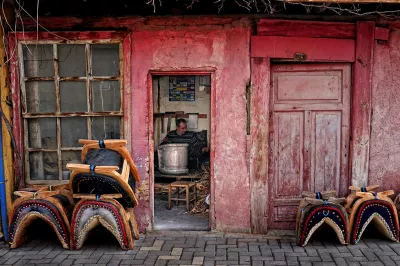Progress and Opportunities for Financial Inclusion in Turkey
With almost 75 million residents (World Bank data as of 2013), Turkey is one of the largest upper middle-income countries with a vast potential to expand financial inclusion. Turkey currently holds the G20 presidency and has declared financial inclusion to be one of its priorities as a powerful driver of inclusive growth. It has traditionally been an important bridge between Europe and Asia and between the developed and developing world, which provides it with a unique opportunity to both learn from varied experiences with financial inclusion initiatives and to share its experience with countries that are less advanced. Looking at key financial inclusion indicators collected during the World Bank Global Findex survey (see table below), the change between 2011 and 2014 is evident: the number of people who saved in the past year more than doubled; the number of women among account holders grew from about 33% to over 44%; and the loan usage grew more than four times.

Photo Credit: Somenath Mukhopadhyay/2014 CGAP Photo Contest
More research will be required to interpret these changes. A closer look at the data reveals that the progress regarding account ownership among women (starting from an extremely low level as discussed in Women and Financial Inclusion: Results from the Global Findex has been paralleled by an equally steep (and frankly, perplexing) decrease of account ownership among men (from 82% to 69%). Similarly, while borrowing from a financial institution has more than quadrupled and is more than six times higher for women than it was in 2011 (albeit starting from an extremely low level of 2.4%), borrowing from a store by buying on credit has slumped from 43% to 12% during the same period. What can be said with some confidence, however, is that there is room for improvement, as the overall account ownership remained unchanged; and while savings rates grew fast, in absolute terms both indicators are significantly lower than in other upper middle-income countries (though slightly higher than in the Europe and Central Asia countries).
The account ownership among women and youth (financial inclusion priorities under the Turkish G20 Presidency) could be further improved – for both of these categories, it is about 25% lower than the average figure of 56.7%. The fast growth in loan usage, high credit card usage (32%of adults have used it in the last year) and still relatively low savings rates may be worth monitoring as they could indicate a growing risk of overindebtedness, if they are coupled with increasing problems by borrowers to repay their debt.
Key Financial Inclusion Data for Turkey and Peer Comparisons (2011 - 2014)
|
Indicator |
Turkey, 2014 (data for 2011 in brackets) |
Europe and Central Asia, 2014 (data for 2011 in brackets) |
Upper middle income, 2014 (data for 2011 in brackets) |
|
Account (% age 15+) |
56.7 (57.6) |
51.4 (44.9) |
70.5 (57.2) |
|
Account, female (% age 15+) |
44.5 (32.7) |
47.4 (40.0) |
67.3 (53.1) |
|
Account, young adults (% ages 15 – 24) |
41.6 (43.8) |
35.6 (31.9) |
58.1 (51.7) |
|
Saved at a financial institution in the past year (% age 15+) |
9.1 (4.2) |
8.4 (7.0) |
32.2 (24.2) |
|
Loan from a financial institution in the past year (% age 15+) |
20.0 (4.6) |
12.4 (7.7) |
10.4 (7.8) |
Source: World Bank Global Findex 2015
According to available data, the lack of proximity to physical access points (such as banks or ATMs) is less of an issue in Turkey than in other emerging economies. With 20 branches per 100,000 adults Turkey is about average compared to other upper middle-income countries. Its branch penetration is skewed towards the urban centers in the west with much lower penetration rates in the southeast of the country (with some provinces having as few as 3.6 branches per 100,000 adults). However, according to the IMF Turkey ranks a highly respectable 6 out of 49 in terms of ATMs per 100,000 adults among its peers of upper middle income countries (at the end of 2013, Turkey had almost 40,000 ATMs in total or 73 per 100,000 adults). Many of the ATMs also have cash acceptance capabilities and allow customers to conduct various financial transactions. In addition, there are the branches of the postal bank, PTTBank (about 2,500, of which many are located in rural areas).
To address financial inclusion gaps, Turkey launched the development of the Financial Inclusion Strategy in 2014. The Turkish G20 priorities also reflect key financial inclusion issues: the country has committed to removing barriers in access to finance for youth and vulnerable groups (women and migrants), as well as to small and medium-sized enterprises. The latter will be discussed in our next blog post – how Turkish banks advance access to finance for this category.
Olga Tomilova is CGAP’s Regional representative for Eastern Europe and Central Asia based in Moscow, Russia.



Add new comment